|
|
LATEST NEWS
Update, March 2008: The Circumstellar Disk around AB Aurigae
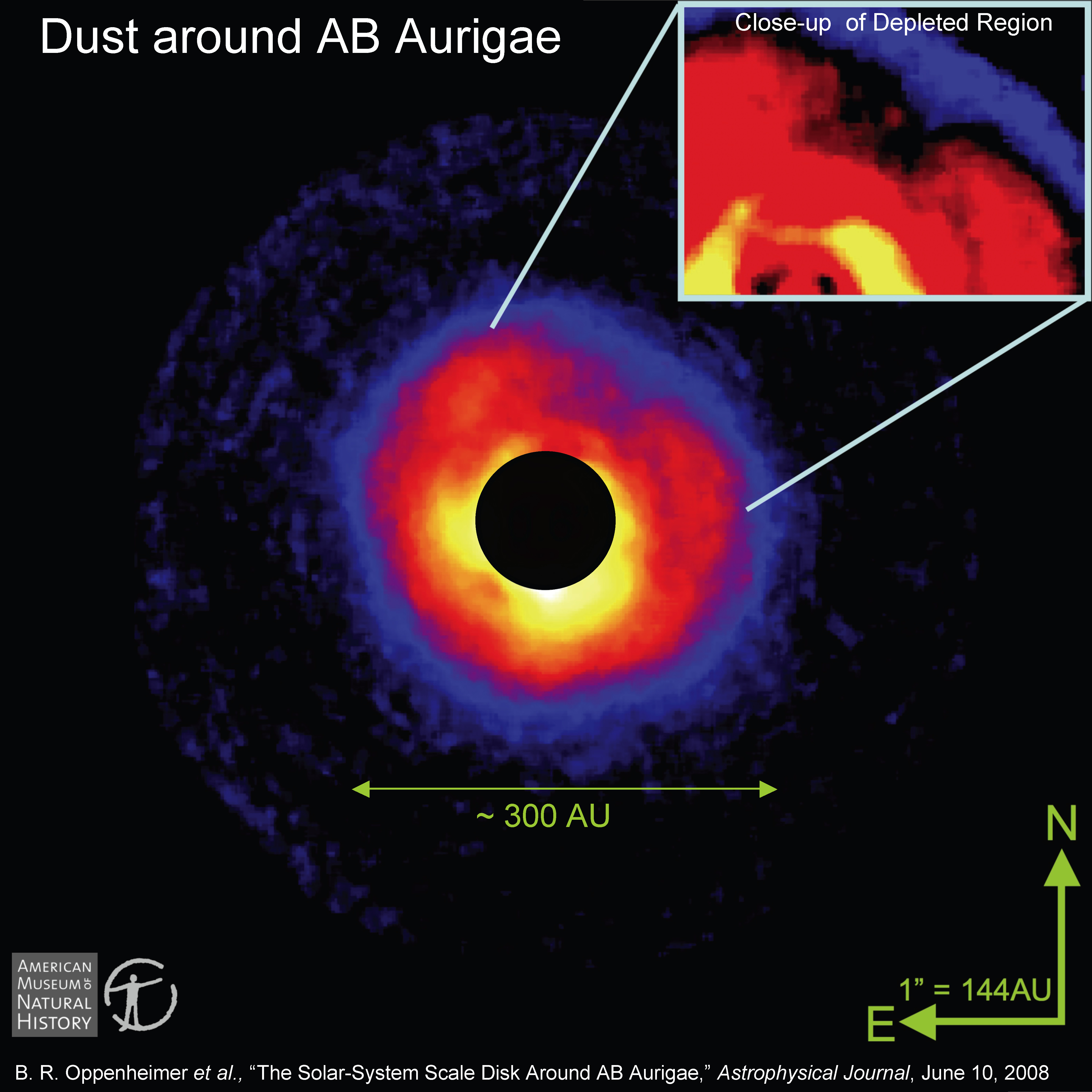 Research paper published on intriguing structure in the disk of dust around the young star AB Aurigae.
Entry at Astro-Ph
NSF Press Release 12:00PM ET, 26 March 2008
New York Times article by Dennis Overbye 26 March 2008
Space.com's article by Jeanna Bryner 26 March 2008
New Scientist article by David Shiga 27 March 2008
Voice of America's program by Mona Ghuneim 27 March 2008
Phliadelphia Inquirer's article by Tom Avril 31 March 2008
Science News article by Ron Cowen April 5, 2008
Research paper published on intriguing structure in the disk of dust around the young star AB Aurigae.
Entry at Astro-Ph
NSF Press Release 12:00PM ET, 26 March 2008
New York Times article by Dennis Overbye 26 March 2008
Space.com's article by Jeanna Bryner 26 March 2008
New Scientist article by David Shiga 27 March 2008
Voice of America's program by Mona Ghuneim 27 March 2008
Phliadelphia Inquirer's article by Tom Avril 31 March 2008
Science News article by Ron Cowen April 5, 2008
Update, January 2007
List of Publications as of December 2007
Coronagraph Fully Operational in Maui
On March 3-5 2004, the coronagraph was shipped from the American Museum
of Natural History in New York to the AEOS telescope in Maui, Hawaii.
The whole shipping process went very smoothly: no part of the
instrument suffered any damage, and the internal alignment was
virtually unaltered. After five days of setup operations - installing
the coronagraph at the observatory and integrating it with Kermit, the
infrared camera - the system was working and ready for first light.
This took place on March 11, with observations of the star 55 Cancri: a
6th magnitude, solar-type star 30 light-years away which has a known
planetary system. This planet is about 4 Jupiter masses and so is
likely to be
too faint for our coronagraph to detect, but stars with known
exoplanets are given high priority in our survey as they may well
harbor planets or companions within our sensitivity range.
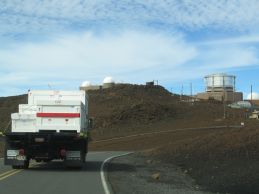
The coronagraph
arriving at the AEOS
telescope |
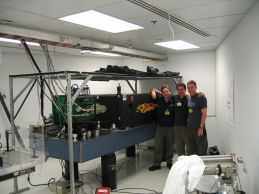
The coronagraph and infrared camera on the
optical bench at AEOS prior
to observing, with (left to right) Jamie Lloyd, Ben Oppenheimer
and
Andrew Digby. The flames are purely for aesthetic purposes!
|
The observing run lasted through to the end of March, but was severely
hampered by bad weather: we managed a total of only about 10 hours
observing target stars. However, the data that we did obtain were
excellent, and demonstrated that the system is working at least as well
as we expected it to. The images we took are likely to be some of the
highest quality, highest contrast stellar images ever made. One of the
most striking features of the images is the symmetry of the bright
spots, or "speckles", which are caused by atmospheric turbulence and
tiny imperfections in the telescope optics. A planet may look very
similar to a speckle in these images, so this symmetry may provide a a
very useful aid in cleaning the speckles from the images and detecting
any underlying planets. No obvious planets, faint companions or disks
were detected in the raw, short-exposure images of the few target stars
we observed, but work is underway to combine these images to probe much
deeper. We will return to AEOS at the start of June for a two-week
observing run.
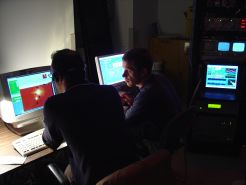
Observations under way
|
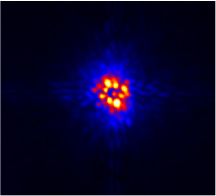
The star 55 Cancri observed with the
coronagraph: possibly one of the
highest quality stellar images ever made. The symmetric
"speckles" arising
from atmospheric effects and imperfections in the telescope
optics are clear.
|
Kermit Sees First Light (April 2003)
The Kermit Infrared Camera achieved first light at the AEOS telescope in April 2003.
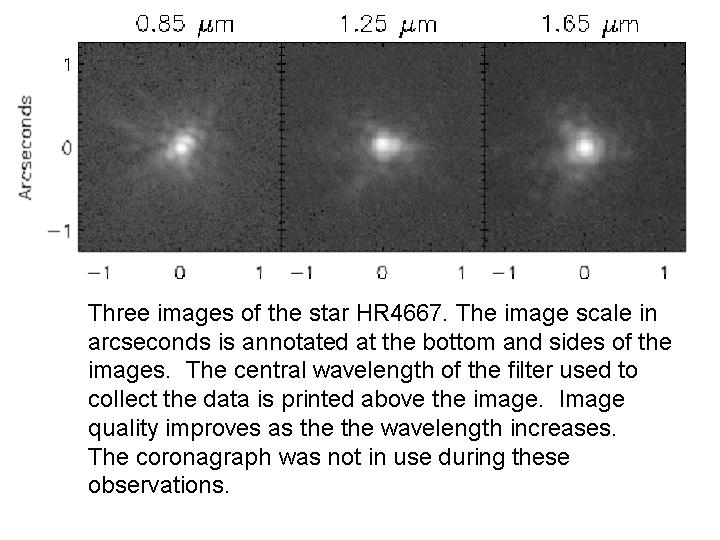
|




 Research paper published on intriguing structure in the disk of dust around the young star AB Aurigae.
Entry at Astro-Ph
NSF Press Release 12:00PM ET, 26 March 2008
New York Times article by Dennis Overbye 26 March 2008
Space.com's article by Jeanna Bryner 26 March 2008
New Scientist article by David Shiga 27 March 2008
Voice of America's program by Mona Ghuneim 27 March 2008
Phliadelphia Inquirer's article by Tom Avril 31 March 2008
Science News article by Ron Cowen April 5, 2008
Research paper published on intriguing structure in the disk of dust around the young star AB Aurigae.
Entry at Astro-Ph
NSF Press Release 12:00PM ET, 26 March 2008
New York Times article by Dennis Overbye 26 March 2008
Space.com's article by Jeanna Bryner 26 March 2008
New Scientist article by David Shiga 27 March 2008
Voice of America's program by Mona Ghuneim 27 March 2008
Phliadelphia Inquirer's article by Tom Avril 31 March 2008
Science News article by Ron Cowen April 5, 2008